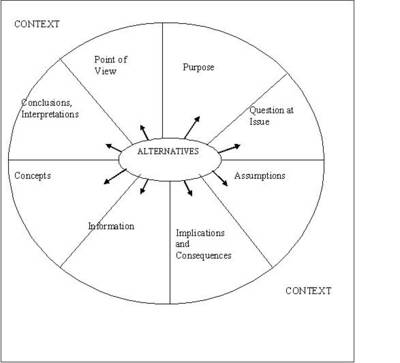Lesson 8 Standards of Critical Thinking
Matthew Lipman
Critica Thinking done well by working with the 8+ elements of reasoning to ensure "reasonableness" (a high standard of logic) needs to be at a certain standard. As Lipman observes it is skilful and self correcting. The standards developed by Richard Paul and others are:
* clearness
*accuracy
*importance/relevance
*sufficiency
* depth
* breadth
* precision
Noisch (Learning to Think Things Through) set out the following questions students and other can ask themselves to check whether they have met the high standard required for critical thinking when presenting a reasoned argment, conclusion or decision.
CLEAR
Is my reasoning clear?
Do I understand this clearly?
Do I know the implications?
Have I given enough
§ examples?
§ contrasting examples?
§ hypothetical causes?
§ analogies?
Have I elaborated enough?
Is my presentation of my reasoning clear?
Have I clearly said what I meant?
ACCURATE
Is my reasoning accurate?
Is this in accord with
§ the best knowledge that I have?
§ the findings of the discipline?
§ reliable sources?
Do I need to check this out?
Check
Could this be based on
§ wishful thinking?
§ unexamined background stories?
§ hearsay, questionable sources?
Does my presentation display accuracy?
Have I supported the accuracy of my claims with reasons and good reasons?
IMPORTANT, RELEVANT
In my reasoning, have I focused on what is most important, given
§ my purpose?
§ the question at issue?
§ the context?
§ Do I have an overview?
§ Can I outline my reasoning?
§ Can I summarize my reasoning?
Have I presented my reasoning in a way that displays what is important?
SUFFICIENT
Have I reasoned this through enough, given
§ my purpose?
§ the question at issue?
§ the context?
Have I left out crucial steps?
Have I jumped to conclusions?
Are there any other essential issues to consider?
In my presentation have I said enough to show my audience that it is reasonable to come to my conclusions?
DEEP AND BROAD
In my reasoning, have I looked beneath the surface?
§ at underlying explanations, theories?
§ At the complexities of the issue?
Have I taken into account the other relevant perspectives?
In my presentation, have I presented my reasoning in such a way that displays its
§ depth?
§ breadth?
PRECISE
Is my reasoning precise enough, specific enough?
§ Do I need more details?
§ Do I need more exactness?
Have I stated the details and degree of exactness my audience needs?
REASONABLE OVERALL
Is my reasoning reasonable overall?
Have I presented a reasonable overall case?


